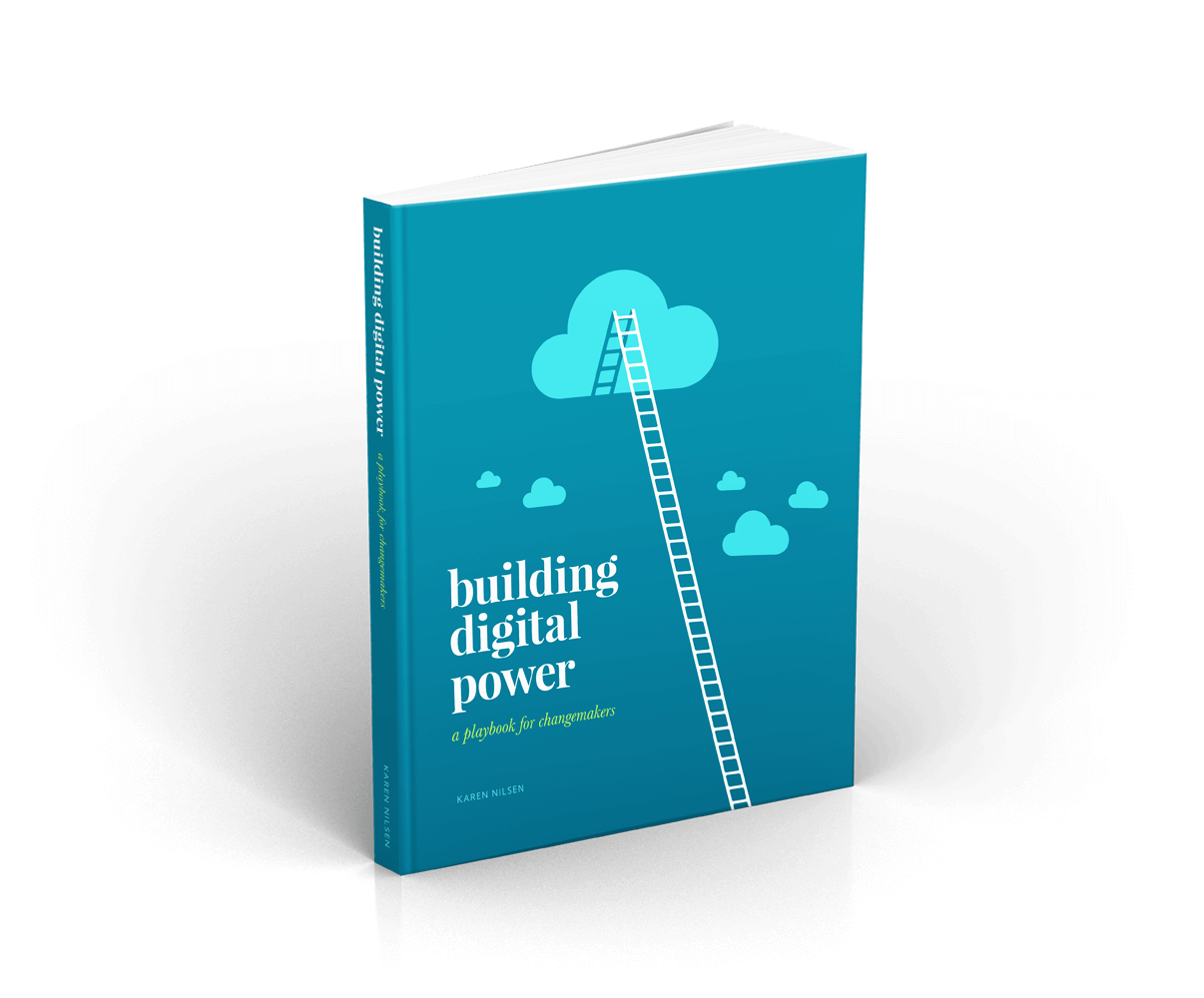Get a free digital strategy tip of the week:
Unsubscribe any time. We respect your data. View the privacy policy.
Whether you’re seeking donations or actions, the formula for writing an effective CTA is pretty simple. To persuade your supporter to drop
Technology moves at light-speed. Every day, smart people are pushing the boundaries of digital design, user experience, and communication. If we hope
Great action pages will attract people via social media, search, traditional media, and even word of mouth. This means they’re ideal for list-building.
A token is a little snippet of encoded data that identifies a supporter and can be attached to links in your email broadcasts.
Most organizations want to grow their online audience. Some of us rely entirely on our supporters to fuel actions and fundraising—the organizational
Let’s be honest, this stuff is hard. Never in human history has there been a communication medium more competitive than the Internet.
On the surface, it looks like the purpose of a title is to introduce the content of a webpage. But of course—you
Imagine you’re at a party. There are plenty of new people you could meet and talk to. There’s a guy talking himself up.
It can feel intuitive to place your action form elements at the end of your page—after your theory of change. However, your supporter
Here’s how the internal dialog usually goes: “We’re torn. We see other organizations sending from individual people but how do we know if
There’s more than one way to build an email list. The various types of digital assets you can use to attract people to
Call it what you will. It’s the idea that when we work together, we’re part of something bigger than ourselves. If achieving
Not every email you send will find its way into an inbox. Optimal deliverability is needed to give your emails a fighting
Whether your call to action (CTA) is a button or a link, don’t get too clever. Speak directly to your supporter and tell
Think of a radio tower. Broadcast signals beaming far and wide. Most people think about email broadcasts this way. Please don’t think
Engage Your Reader’s Emotional Brain
Inboxes aren’t often exciting places. Neither are the majority of web pages, if we’re honest. This can work to your advantage. Your content will stand out when you can reach your supporter’s emotional brain. This is where motivations are fueled. It’s where decisions are made. It’s where attention spans expand.
Whether you’re writing for an email, a webpage, or a post for social media, emotion is the fuel that will drive actions, inspire shares, and commit important ideas to memory.
Emotion is the fuel that will drive actions, inspire shares, and commit important ideas to memory
Anything that will stir emotions will work here—surprise, intrigue, shock, sadness, joy... Find space for a mix of positive and negative emotional responses across your communications. Avoid focussing solely on negative emotions such as sadness, outrage, and anger—this will fatigue most audiences before long. Remember to replenish your supporter’s emotional reserves with stories of hope and aspiration. Telling your movement story is a great way to do this with authenticity.
Five ways to heighten emotional impact
- Focus on experience. What is the lived impact of an issue on those you’re fighting for? Frame the problem around that.
- Tell ‘big’ stories through the eyes of an individual. How much we care about something should be proportional to how big the problem is. But we aren’t wired that way. In reality, the more individuals a problem impacts, the less people tend to care. Our brain psychology favors the plight of individuals. This cognitive bias, known as psychic numbing, poses a challenge for advocates who tackle wide-scale problems. Resist relying merely on scale to convey importance; focus on the experiences of individuals instead.
Focus: scale
Millions upon millions of chickens raised for meat will die from lameness before they even reach slaughter age. Birds who can’t walk may suffer painful lesions from contact with feces soaked litter, and may starve without the ability to reach food or water.
Focus: individual
In her short life, a ‘meat’ chicken will struggle to carry the weight of her unnaturally large body. There’s a very real chance her legs may collapse—leading to painful ‘breast blisters’ from constantly lying in feces. Unable to reach food or water, she faces a slow death by starvation.
Visual storytelling can also emote more strongly when the focus of a photo or video allows the viewer to connect with an individual. Choose hero images that draw focus to individuals through composition, closeups, or eye contact. Combine individual-centric visuals with individual-centric messaging to multiply this effect.
- Get specific. Master the art of ‘showing, not telling‘ by illustrating your point with concrete examples. For example, if you’re describing the failures of factory farms, don’t just refer to the denial of ‘natural behaviors’—identify the behaviors that animals are denied. Describe the inability to walk; to breathe fresh air; or see sunlight. The less abstract your message, the more it will emote, and the easier it will persuade.
- Evoke the senses. Be visceral. Draw on sight, sound, smell, taste, and/or feel to bee-line to the brain’s emotional processors. Not only are the senses a powerful way to evoke an emotional response, they represent one of the undeniable links that unite the human and non-human animal condition. This makes sensory narratives especially valuable to animal advocacy. Is the floor wet? Rough? Cold? Consider the difference between a “lack of fresh air” inside that chicken shed—and—the air being so thick with ammonia that it “burns your eyes and lungs”.
- Draw parallels. Nurture your reader’s empathic response by tapping into shared values and shared experiences. For example, universal values such as freedom, safety, and familial bonds will resonate across species. Help your reader recognize the trauma felt by farmed animals by reminding them that their experience of fear, pain, and suffering is the same as that of our beloved cats and dogs. Or go a step further: cutting off a piglet’s tail—through bone—without pain relief—is not unlike severing your little finger. It’s hard to read that without a wince.
Be a storyteller
There’s a reason we teach children important lessons through stories. We’re hardwired to pay attention to them. For thousands of years, this is how we’ve passed on intergenerational information. And our appetite for books, television and movies proves that this is something we never grow out of.
Fast-track your digital strategy learning curve.
Free eBookIf you need people to understand the moral of your story, tell the story of your moral
Great stories do more than document ‘what happened when’. Sometimes recounting events in chronological order is the least compelling way to tell a story. Consider how different structures can reveal insights, heighten tension, and build emotional investment in the fate of your subject.
The most memorable stories in human history (such as ‘ the hero’s journey’) are repeated in modern culture again and again and again. This is a story you can tell, too. Inspire actions by writing your supporter into your narrative and turning them into the hero of change stories.
Use emotional arcs
Purely aspirational stories lack consequence; purely negative ones lack hope. A story that connects both outrage and hope will create a ‘pull’ in your reader that you can use to drive action, support, and sharing. By stretching the emotional range in your narrative, you can enhance emotional persuasion.
Emotional narrative first. Facts second.
Facts and statistics will struggle to move your audience. That’s because people’s decisions (and opinions) are largely driven by emotions. When making an emotionally persuasive argument, lead with emotional narrative and follow with facts. Facts will rarely convince your reader, however, they will help your reader rationalize and cement their position.
What draws people to your cause? What motivated your supporters to take their first action? What did they feel when they first donated? Why do you exist? The answer to all these questions is the same. And...
4 minute readWhat draws people to your cause? What motivated your supporters to take their first action? What did they feel when they first donated?...
Continue →Like this tip? Share it!






